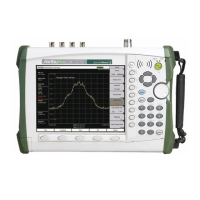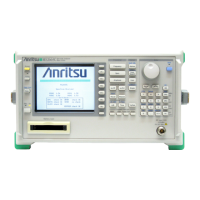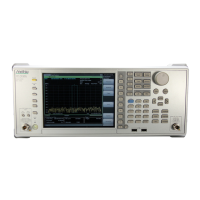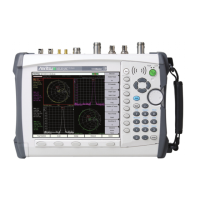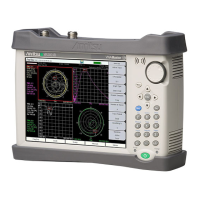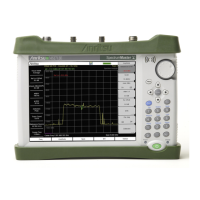9-23
9.5 APR [Application Result]
• Value of Sk (S1, S2, S3,...)
Sk indicates the SNR of peak No. k.
Sk = xxx.xx in dB units to two decimal places.
The first Spacing S1 is 0.
• Value of dk (RL1, RLS2, RL3,...)
dk is the noise detection direction for peak No.k.
dk = LEFT, RIGHT, or ERR (when Dip not detected)
• Value of Rn
Rn indicates the reference peak No.
Rn = 1 to 128
• Value of SPk (SP1, SP2, SP3,..)
SPk indicates the spacing of peak No.k.
SPk = xxxx.xxx in nm units to three decimal places
However, since there is no SP1 spacing data, SP1 = 0.
• Value of SPfk(SPf1, SPf2, SPf3...)
SPfk indicates the value of the spacing frequency of peak k.
SPfk = xxxx.xx: Outputs values in fixed GHz units to two decimal places. The
spacing data for SPf, however, does not exist, thus, outputs Spf1 = 0.
•Rλ (Rλ1, Rλ2, Rλ3,...)
Rλk indicates the relative wavelength of peak No. k.
Rλk = xxx.xxx in nm units to three decimal places
• Value of RLk (RL1, RL2, RL3,...)
RLk indicates the relative level of peak No. k.
RLk = xxx.xx in dB units to two decimal places
• Value of λ
λ indicates the wavelength of the specified peak
λ = xxxx.xx in nm to two decimal units
• Value of f
f indicates the value of the frequency of the specified peak.
f=xxx.xxxx: Outputs values in fixed THz units to two decimal places.
• Value of L
L indicates the level of the specified peak.
L = xxxx.xx in dBm units to two decimal places
• Value of S
S indicates the SNR of the specified peak
S = xxx.xx in dB units to two decimal places
